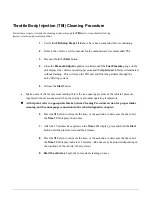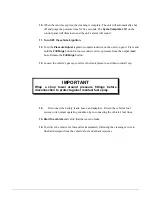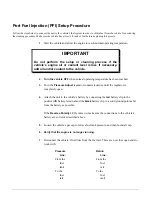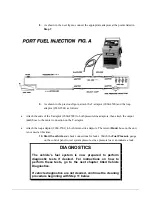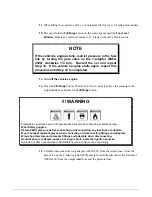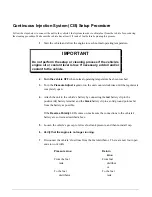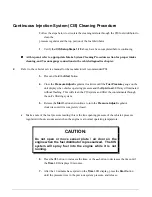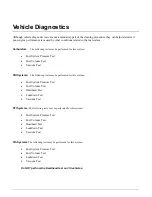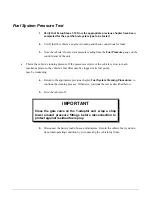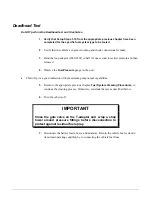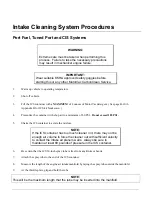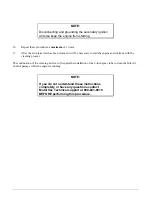
Returnless Fuel System Setup Procedure
Follow the steps below to connect the unit to the vehicle's fuel system.
Make sure the vehicle has at least 1/8 tank of fuel before beginning this process.
IMPORTANT
Do not perform the setup or cleaning process if the vehicle's
engine oil or coolant level is low.
If necessary, add oil and/or coolant to the vehicle.
1.
Start the vehicle’s engine and allow the engine to reach normal operating temperature.
2.
Turn the vehicle’s engine off when normal operating temperature has been reached.
3.
Turn the pressure regulator knob counterclockwise until the regulator is completely open. Verify
that the power is switch is turned off.
4.
Attach the unit to the vehicle's battery by connecting the red battery clip to the positive (
) battery terminal and
the black battery clip to a solid ground point as far from the battery as possible.
5.
Loosen the vehicle’s gas cap to relieve fuel tank pressure, and then re-install cap.
6.
Disconnect the vehicle's fuel line at the fuel rail or at the fuel pump outlet.
There should now be two open ends to work with (single Pressure Line), one coming from the fuel pump & one
going into the fuel rail.
7.
Add gasoline and detergent mixture to the reservoir (See Reservoir Filling / Vehicle Diagnostics).
/!\ WARNING
Flammable Liquid can squirt out of pressurized lines when connecting or disconnecting.
Wear Safety goggles.
Obtain ZERO pressure before connecting or disconnecting any fuel lines or adaptors.
Wear chemical resistant gloves when connecting or disconnecting fittings and adaptors.
Wrap shop towel around pressure fittings and adaptors when disconnecting.
Avoid exposure to flames, sparks, hot engine parts, and other ignition sources.
Explosion or flame or exposure to flammable liquid and vapors can cause injury.
8.
As shown in the figure on the next page, connect the output
(Red)
hose to adaptor leading to the fuel rail. The
return
(Black)
hose is not used. Deadhead the fuel line coming from the vehicle’s fuel pump by looping the T-
adaptor (060-4500) back unto itself. On most vehicles it is not necessary to disable the fuel pump causing
unnecessary fault codes. The fuel pressure regulator is in the fuel tank and will purge / regulate the fuel
pressure automatically
. Ford vehicles and Jaguar with ford engines will require that the fuel pump be
disabled. DO NOT ‘DEADHEAD’ FORD SINGLE LINE SYSTEM!

